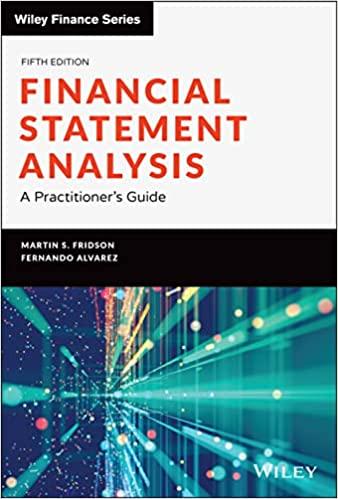Question
Incorporate the combined attributes of debt and equity given a cost of capital model. The concept of after-tax weighted average cost of capital (WACC) is
Incorporate the combined attributes of debt and equity given a cost of capital model.
The concept of after-tax weighted average cost of capital (WACC) is a foundation when assessing cost of capital and investment options. The assignment will present the opportunity to assess a financing transaction and build upon your understanding of this cost of capital concept and demonstrate your ability to calculate the after-tax WACC.
Read the scenario and address the checklist items below.
Scenario: You are an angel investor who has been approached by an entrepreneur to assess an investment opportunity.
An entrepreneur asks for $100,000 to purchase a diagnostic machine for a healthcare facility. The entrepreneur hopes to maintain as much equity in the company as possible, yet as the angel investor, you require the transaction to be financed with 60% debt and 40% equity.
As the angel investor, you assign a cost of equity of 16% and a cost of debt at 9%. Based on Year 1 sales projections, the entrepreneur assures you a return on investment (ROI) of 9%; conceptually this will cover the first years pretax cost of debt and allow for planned equity growth and a refinancing model for Year 2. You will use an after-tax weighted average cost of capital (AT- WACC) model, which includes the after-tax cost of debt and proportionate costs of debt versus equity. A 35% marginal tax rate is applied.
Address the following checklist items:
Checklist:
- Explain the tax benefits of debt financing.
- Calculate the AT-WACC with a 60% debt and 40% equity financing structure.
- Apply the calculated AT-WACC to explain why this is or is not a viable investment for you as the angel investor.
- Explain a financial restructuring AT-WACC (given changes to proportions of % debt versus % equity financing) that would create a positive ROI.
- Explain why you as the angel investor would require more or less debt versus equity financing. Be sure to note the role of the Unified Commercial Code-1 (UCC-1) document in this transaction and the order of claim on assets in times of a bankruptcy.
Step by Step Solution
There are 3 Steps involved in it
Step: 1

Get Instant Access to Expert-Tailored Solutions
See step-by-step solutions with expert insights and AI powered tools for academic success
Step: 2

Step: 3

Ace Your Homework with AI
Get the answers you need in no time with our AI-driven, step-by-step assistance
Get Started


